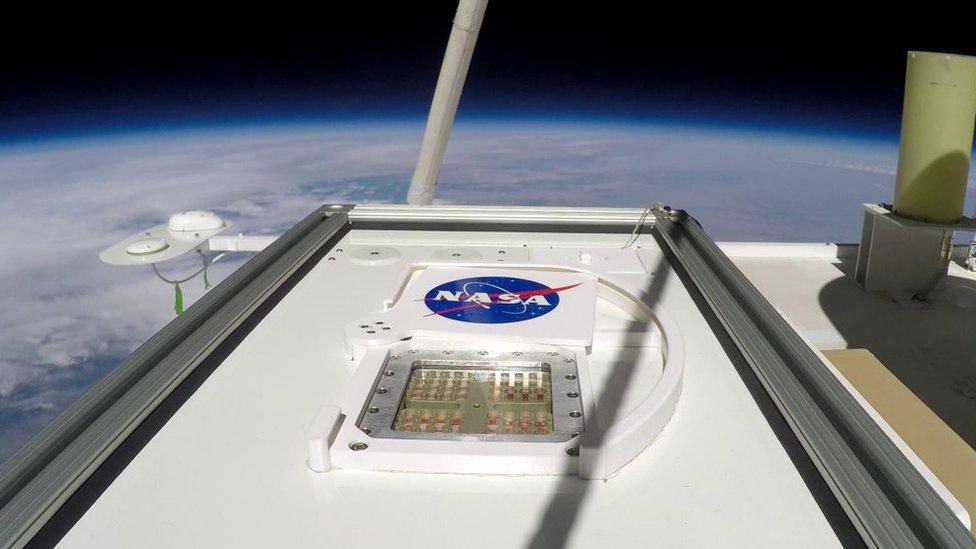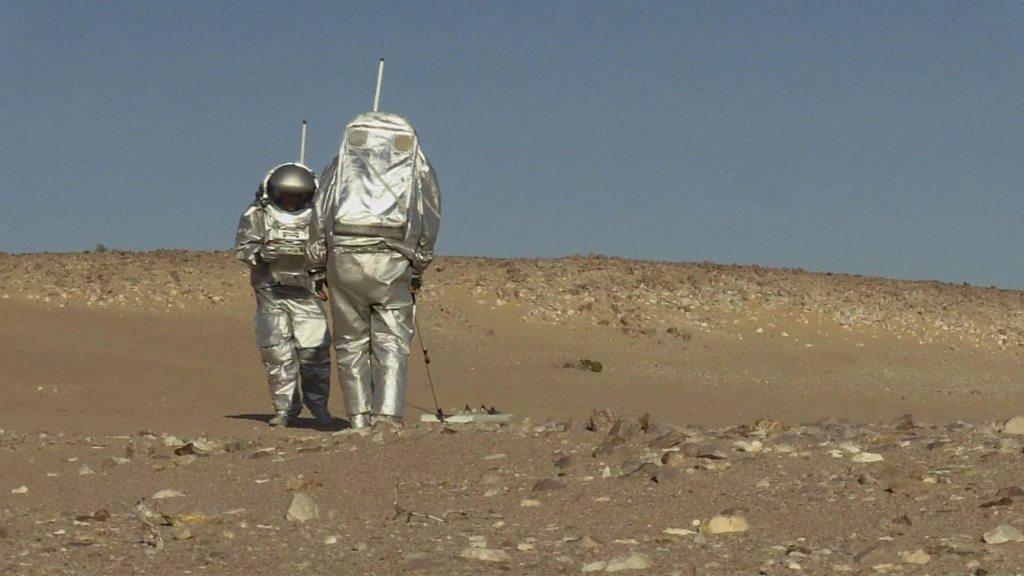Can life from Earth survive on Mars?
- Published
- comments

Scientists have discovered that some life from Earth could survive in Mars-like conditions.
Researchers from Nasa and the German Aerospace Centre (DLR) worked together on a study to test whether microorganisms from Earth could survive in a Mars-like atmosphere.
Marta Filipa Cortesão, who was the joint-lead author of the study said: "We successfully tested a new way of exposing bacteria and fungi to Mars-like conditions by using a scientific balloon to fly our experimental equipment up to Earth's stratosphere."
Scientists wanted to see if organisms from Earth could live on another planet, and see if food could be grown.
How did the scientists test this?

On 23 Septembee 2019 scientists launched a number of tiny microorganisms, such as bacteria, filamentous fungi (mould) and yeast, into the Earth's stratosphere as part of their MARSBOx (Microbes in Atmosphere for Radiation, Survival and Biological Outcomes experiment) mission.
The microbes were placed inside a special aluminium container called TREX which when launched, helped expose the microbes to a Mars-like atmosphere, pressure, temperature and UV-radiation conditions.
It's COLD - The average temperature on Mars is -63 degrees Celsius. Brrr!
Hard to breathe - The atmosphere on Mars contains more than 95% carbon dioxide and much less than 1% oxygen. People would not be able to breathe the air on Mars.
It has much higher levels of radiation than on Earth.
The mission lasted six and a half hours, at an altitude of around 38 kilometres (about 24 miles above Earth).
The results showed that most of the bacteria died, however, the fungal spores were able to withstand the harsh environment!
This research is a promising sign for the scientists to see whether or not food could be grown on Mars.
- Published7 March 2018

- Published9 March 2020

- Published12 February 2018

